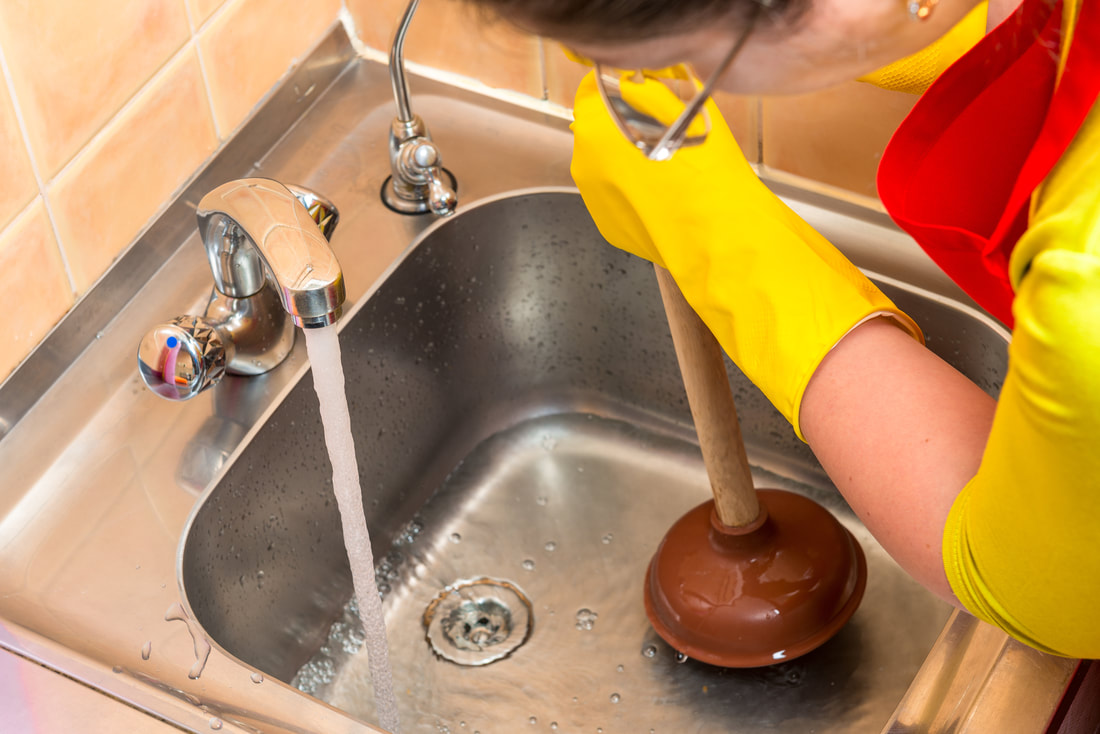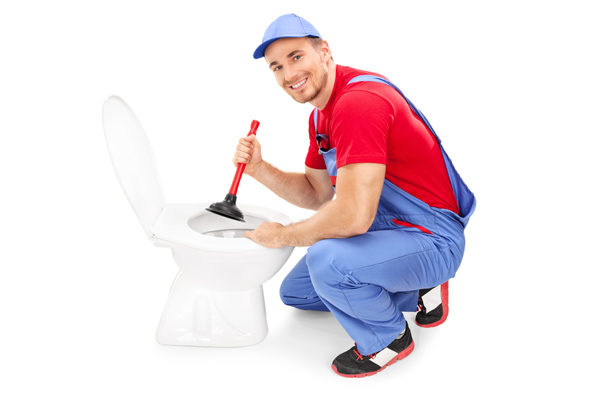Utilizing Plungers and Drain Cleaner: Expert Strategies
Utilizing Plungers and Drain Cleaner: Expert Strategies
Blog Article
Just how do you feel in regards to A Guide to Plungers (and How to Use Them)?

Introduction
Proper maintenance of home drains is important for avoiding clogs and guaranteeing smooth water flow. Among the secret tools in every property owner's toolkit is the plunger, along with different drain cleansers made to deal with stubborn obstructions successfully. This short article explores exactly how to use bettors and drain cleansers efficiently to maintain your drains flowing openly.
Section 1: Recognizing Plungers
Kinds of Plungers
There are several sorts of plungers readily available, each designed for various sorts of drains and blocks. One of the most common kinds consist of cup plungers, flange plungers, and accordion bettors.
Just How Plungers Work
Plungers service the concept of creating pressure and suction to remove blockages. When effectively used over a drainpipe, they develop a vacuum cleaner that can take out particles or break up blockages.
Selecting the Right Bettor
Selecting the right bettor relies on the type of drainpipe and the nature of the blockage. Mug plungers are ideal for sinks and tubs, while flange plungers are better suited for toilets as a result of their layout.
Typical Errors with Plungers
Staying clear of these blunders makes sure efficient plunging: improper seal around the drainpipe, inadequate force, and unclear surrounding particles.
Section 2: Utilizing Plungers Properly
Prep work
Prior to plunging, make sure the plunger covers the drain entirely and forms a tight seal. Clear any noticeable particles around the drainpipe opening.
Strategy
Begin with mild diving activities to build suction. Rise stress gradually, utilizing a consistent rhythm. Repeat as essential till the drain gets rid of.
Troubleshooting Tips
If diving doesn't work, try readjusting the seal, using oil jelly for a far better seal, or utilizing a various sort of bettor.
Area 3: Understanding Drain Cleansers
Types of Drainpipe Cleansers
Drain pipes cleaners can be chemical or enzymatic. Chemical cleaners use solid chemicals to dissolve blockages, while chemical cleaners utilize all-natural enzymes to break down raw material.
Just How Drain Cleaning Company Job
Chemical cleaners respond with obstructions to dissolve them, while enzymatic cleaners break down organic products like hair and oil without hurting pipes.
Safety and security Factors to consider
Constantly put on handwear covers and eye defense when making use of chemical drainpipe cleaners. Make certain appropriate air flow and adhere to manufacturer instructions thoroughly.
Eco-Friendly Alternatives
Take into consideration utilizing vinegar and cooking soda or enzyme-based cleaners for environment-friendly choices that are much safer for pipes and the atmosphere.
Section 4: Utilizing Drainpipe Cleaning Company Properly
Application Techniques
Pour chemical cleaners directly right into the drain opening. Allow them to benefit the recommended time prior to purging with hot water. Enzymatic cleansers should sit over night.
Preventative measures
Prevent blending various types of cleaners, as this can generate harmful fumes. Never use chemical cleaners along with a plunger, as spilling can happen.
Handling Stubborn Clogs
For persistent obstructions, take into consideration making use of a pipes serpent or calling a professional plumbing technician to stop damage to pipelines.
Verdict
To conclude, understanding exactly how to make use of plungers and drain cleansers effectively is vital for maintaining healthy pipes systems. By picking the right tools and strategies, homeowners can take on small blockages and protect against major pipes concerns down the line.
How To Properly Use A Plumbing Snake To Clear Drains
When any drain clogs in our home arise, we tend to gravitate toward the plunger and little else. In cases where the plunger and its vacuum-created pressure are not able to clear clogs, many immediately move to harmful chemicals or simply call their plumber to fix the issue.
we’re happy to help with all drain cleaning needs and concerns. This includes informing you on a few other home remedies you may have at your disposal for minor to moderate clogs, one of which is the use of a plumbing snake. Many people have never used one of these before – let’s go over the steps to take when your drain clogs and you have a plumbing snake available.
Attempt Plunger Use
The first step here, as we noted above, should indeed be to grab your plunger when you notice a drain clog and attempt to resolve it this way. If you’re unsure how to use a particular type of plunger, our plumbers can answer any questions you have. If this doesn’t do the trick, however, you move on to the snake.
Locate And Prepare Snake
A plumbing snake is a metal or plastic device that’s generally about a quarter of an inch thick. It’s design with significant extensions, meant to reach down into your clogged drain and push the clog out. Snakes also contain drain augers that will latch onto and push stubborn blockages.
If your plunger doesn’t clear a clog, locate your snake and bring it to the drain in question. We also recommend keeping a bucket nearby to collect the clog once you pull it out, plus we’d advise wearing goggles and possibly protective gloves.
Feed Snake
Once you’re ready to go, feed the snake slowly down the drain, using the crank device it comes with to keep it moving until it finds the clog. Once this happens, much of the clog will be latched onto the coil so you can pull it out, while the rest will simply break up and flow downward.
Detach Debris
Remove the snake slowly from the drain, and once you’ve done so, pick off any debris that’s stuck to the coil. This is another area where wearing gloves is a must.
Flush Drain
Finally, take a few minutes to ensure the snake has done its job correctly. If you’ve been using it on a toilet, flush the toilet a couple times and make sure everything flows well. If you’ve used it on a different drain, flush it with some room temperature water.
https://www.mybuddytheplumber.com/blog/how-to-properly-use-a-plumbing-snake-to-clear-drains/

Application Techniques
Pour chemical cleaners directly right into the drain opening. Allow them to benefit the recommended time prior to purging with hot water. Enzymatic cleansers should sit over night.
Preventative measures
Prevent blending various types of cleaners, as this can generate harmful fumes. Never use chemical cleaners along with a plunger, as spilling can happen.
Handling Stubborn Clogs
For persistent obstructions, take into consideration making use of a pipes serpent or calling a professional plumbing technician to stop damage to pipelines.
Verdict
To conclude, understanding exactly how to make use of plungers and drain cleansers effectively is vital for maintaining healthy pipes systems. By picking the right tools and strategies, homeowners can take on small blockages and protect against major pipes concerns down the line.
How To Properly Use A Plumbing Snake To Clear Drains
When any drain clogs in our home arise, we tend to gravitate toward the plunger and little else. In cases where the plunger and its vacuum-created pressure are not able to clear clogs, many immediately move to harmful chemicals or simply call their plumber to fix the issue.
we’re happy to help with all drain cleaning needs and concerns. This includes informing you on a few other home remedies you may have at your disposal for minor to moderate clogs, one of which is the use of a plumbing snake. Many people have never used one of these before – let’s go over the steps to take when your drain clogs and you have a plumbing snake available.
Attempt Plunger Use
The first step here, as we noted above, should indeed be to grab your plunger when you notice a drain clog and attempt to resolve it this way. If you’re unsure how to use a particular type of plunger, our plumbers can answer any questions you have. If this doesn’t do the trick, however, you move on to the snake.
Locate And Prepare Snake
A plumbing snake is a metal or plastic device that’s generally about a quarter of an inch thick. It’s design with significant extensions, meant to reach down into your clogged drain and push the clog out. Snakes also contain drain augers that will latch onto and push stubborn blockages.
If your plunger doesn’t clear a clog, locate your snake and bring it to the drain in question. We also recommend keeping a bucket nearby to collect the clog once you pull it out, plus we’d advise wearing goggles and possibly protective gloves.
Feed Snake
Once you’re ready to go, feed the snake slowly down the drain, using the crank device it comes with to keep it moving until it finds the clog. Once this happens, much of the clog will be latched onto the coil so you can pull it out, while the rest will simply break up and flow downward.
Detach Debris
Remove the snake slowly from the drain, and once you’ve done so, pick off any debris that’s stuck to the coil. This is another area where wearing gloves is a must.
Flush Drain
Finally, take a few minutes to ensure the snake has done its job correctly. If you’ve been using it on a toilet, flush the toilet a couple times and make sure everything flows well. If you’ve used it on a different drain, flush it with some room temperature water.
https://www.mybuddytheplumber.com/blog/how-to-properly-use-a-plumbing-snake-to-clear-drains/

I came across that post on Tips on How to Effectively Use a Plunger when doing research the internet. Feel free to pause to share this blog if you liked it. Thank you for being here. Come back soon.
Click Here Report this page